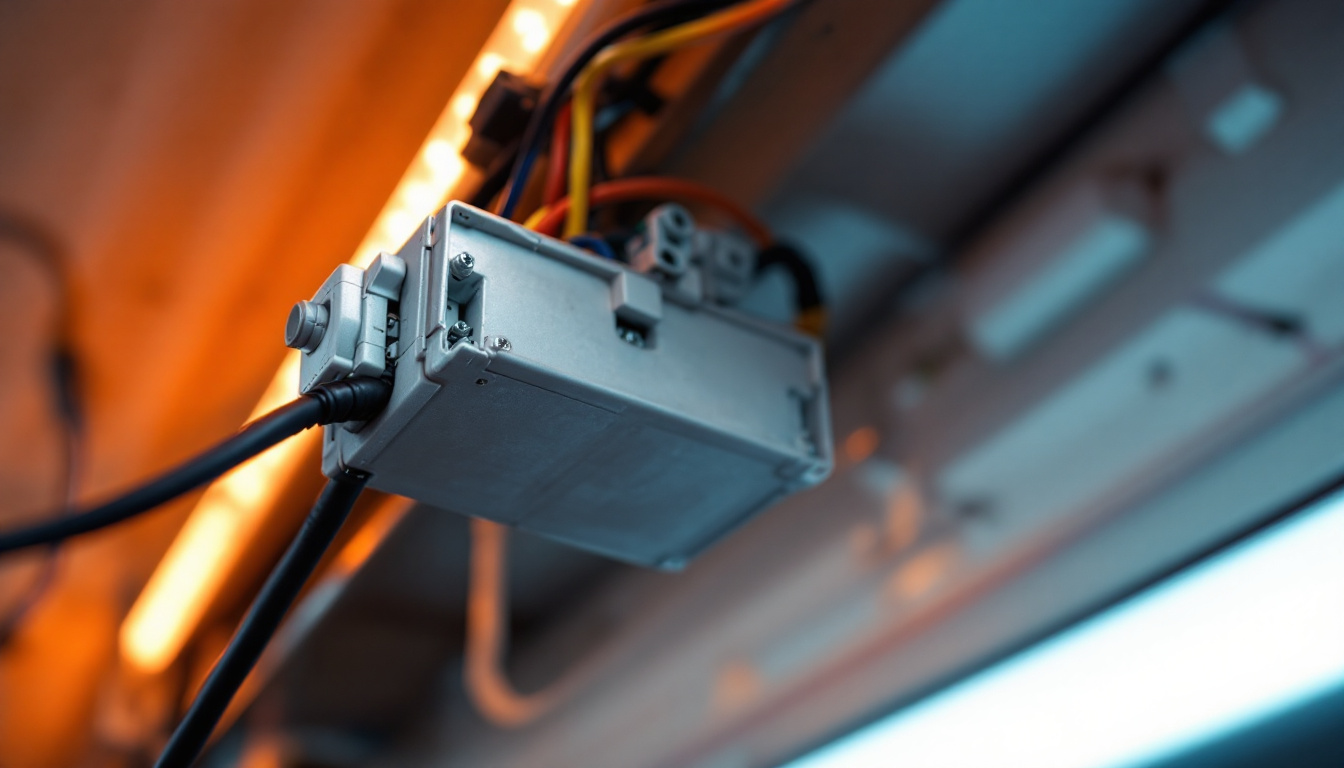
In the realm of lighting installations, ensuring safety and efficiency is paramount. One critical component that plays a significant role in achieving this is the fluorescent light ballast. This device not only regulates the current to the fluorescent lamps but also contributes to the overall safety of lighting systems. Understanding how a ballast functions and its safety features can empower lighting contractors to make informed decisions for their projects.
A fluorescent light ballast is an electrical device that provides the necessary starting voltage and regulates the current flowing through the fluorescent lamp. Without a ballast, the lamp would draw excessive current, leading to overheating and potential failure. The ballast essentially acts as a stabilizer, ensuring that the lamp operates efficiently and safely.
There are two primary types of ballasts: electromagnetic and electronic. Electromagnetic ballasts use a transformer to regulate the current, while electronic ballasts utilize electronic circuits. Each type has its own advantages and applications, but both serve the critical function of maintaining safe operation. For instance, electromagnetic ballasts are often found in older lighting systems and are known for their durability, while electronic ballasts are more common in contemporary settings due to their compact size and enhanced energy efficiency.
The operation of a fluorescent light ballast involves several key processes. Initially, when the lamp is turned on, the ballast provides a high voltage to ignite the gas within the tube. Once the gas is ionized, the ballast reduces the voltage to a level that allows the lamp to operate efficiently. This regulation is vital; without it, the lamp could draw too much current, leading to flickering, reduced lifespan, or even catastrophic failure.
Moreover, electronic ballasts offer additional benefits, such as improved energy efficiency and reduced flicker, making them a preferred choice in many modern installations. These advancements not only enhance performance but also contribute to a safer lighting environment. In addition, electronic ballasts can often operate multiple lamps simultaneously, which can simplify installation and reduce overall costs in commercial applications. The ability to dim lights and control them through advanced systems also allows for greater flexibility in lighting design, catering to various needs and preferences in both residential and commercial spaces.
Furthermore, the choice of ballast can significantly impact the overall energy consumption of a lighting system. With the push for sustainability and energy efficiency, many businesses and homeowners are now opting for electronic ballasts that comply with energy-saving regulations. These ballasts not only help reduce electricity bills but also minimize environmental impact by lowering greenhouse gas emissions associated with energy production. As technology continues to evolve, we can expect to see even more innovative solutions in the realm of fluorescent lighting, further enhancing the efficiency and functionality of ballasts.
One of the primary safety benefits of using a fluorescent light ballast is its ability to prevent overheating. Overheating can occur when a lamp draws too much current, leading to potential fire hazards. The ballast mitigates this risk by regulating the current flow, ensuring that the lamp operates within safe parameters.
In addition to protecting the lamp itself, preventing overheating also safeguards the surrounding environment. In commercial settings, where multiple fixtures may be installed close together, the risk of heat buildup can be significant. A properly functioning ballast reduces this risk, contributing to a safer workplace. Moreover, in environments such as warehouses or manufacturing plants, where equipment is often in close proximity, the importance of heat management cannot be overstated. By maintaining optimal operating temperatures, ballasts help to prolong the lifespan of not only the lighting fixtures but also nearby electronic devices that could be adversely affected by excessive heat.
Fluorescent light ballasts also enhance circuit protection, which is crucial for any electrical installation. In the event of a power surge or short circuit, the ballast acts as a buffer, preventing excessive current from damaging the lamp or the electrical system. This protective feature is particularly important in environments where electrical fluctuations are common.
Furthermore, some electronic ballasts come equipped with built-in protection mechanisms that automatically shut off the lamp in case of a fault. This feature not only prevents damage to the lighting system but also minimizes the risk of electrical fires, making installations safer for both occupants and property. In addition, the integration of advanced technology in modern ballasts can provide diagnostic information, alerting maintenance personnel to potential issues before they escalate into serious problems. This proactive approach to circuit protection not only enhances safety but also improves operational efficiency, ensuring that lighting systems remain functional and reliable.
Flickering lights can be more than just an annoyance; they can lead to eye strain and discomfort for occupants. Fluorescent light ballasts, especially electronic ones, help to minimize flicker by providing a consistent current to the lamp. This smooth operation not only enhances the quality of light but also contributes to a more comfortable and safer environment.
In settings such as offices, schools, and hospitals, where individuals may spend extended periods under artificial lighting, reducing flicker is essential. By ensuring a stable light output, ballasts help to create a healthier atmosphere, reducing the likelihood of headaches and visual fatigue. Additionally, the impact of flickering lights extends beyond mere discomfort; studies have shown that prolonged exposure to flickering can lead to decreased productivity and increased irritability among workers. By investing in high-quality fluorescent ballasts, organizations can foster a more conducive work environment, ultimately enhancing employee well-being and performance. This attention to lighting quality is particularly vital in educational institutions, where optimal learning conditions can significantly influence student engagement and success.
When selecting a fluorescent light ballast, several factors must be considered to ensure safety and efficiency. First and foremost, it is essential to match the ballast to the specific type and wattage of the fluorescent lamp being used. An incompatible ballast can lead to poor performance and increased safety risks. For instance, using a ballast designed for a lower wattage lamp with a higher wattage bulb can result in overheating, which not only diminishes the lifespan of the bulb but also poses a fire hazard.
Additionally, contractors should evaluate the installation environment. For example, in areas prone to power surges, a ballast with enhanced surge protection may be necessary. Similarly, understanding the specific needs of the space—such as the desired light quality and energy efficiency—will guide the selection process. Factors like ambient temperature and humidity levels can also influence ballast performance; thus, selecting a ballast rated for the specific environmental conditions can enhance reliability and longevity.
Adhering to safety standards is crucial in any lighting installation. Many regions have specific regulations regarding electrical installations, including the use of ballasts. Contractors should ensure that the selected ballast complies with local codes and industry standards to guarantee safety and reliability. This compliance not only protects the integrity of the installation but also safeguards the health and safety of the occupants in the space.
Moreover, using ballasts that are certified by recognized testing laboratories can provide an additional layer of assurance. These certifications indicate that the ballast has undergone rigorous testing for safety and performance, helping to mitigate risks associated with electrical installations. It is also beneficial to consider energy efficiency ratings, as many modern ballasts are designed to reduce energy consumption while maintaining optimal lighting levels. This not only contributes to lower utility bills but also aligns with sustainability efforts, making it an important aspect of modern electrical design.
Correct wiring is fundamental to the safe operation of fluorescent light ballasts. Contractors should follow manufacturer guidelines and local electrical codes when wiring the ballast to ensure a secure and reliable connection. Loose or improper connections can lead to arcing, overheating, and potential fire hazards.
Furthermore, using the appropriate gauge of wire and connectors is essential for maintaining safety. Thicker wires may be required for higher wattage applications, while using connectors rated for the specific load will help prevent failures.
Once installed, regular maintenance and inspections of fluorescent light ballasts are vital for ensuring ongoing safety. Over time, components can wear out or become damaged, leading to potential hazards. Periodic checks can identify issues such as frayed wires, signs of overheating, or malfunctioning ballasts.
Establishing a maintenance schedule can help contractors stay proactive in addressing potential problems before they escalate. This not only enhances safety but also extends the lifespan of the lighting system, providing long-term value for clients.
Fluorescent light ballasts play a crucial role in enhancing safety in lighting installations. By regulating current, preventing overheating, and providing circuit protection, these devices contribute to a safer environment for both occupants and property. Understanding the various types of ballasts, their safety features, and best practices for installation and maintenance is essential for lighting contractors aiming to deliver high-quality and safe lighting solutions.
As the lighting industry continues to evolve, staying informed about advancements in ballast technology and safety standards will empower contractors to make the best choices for their projects. Ultimately, prioritizing safety not only protects clients but also enhances the reputation and reliability of lighting professionals in the field.
Ready to enhance the safety and efficiency of your lighting installations with the best fluorescent light ballasts on the market? Look no further than LumenWholesale. Our commitment to providing contractors with spec-grade lighting products at unbeatable wholesale prices means you can trust in the reliability and performance of your lighting solutions. With our extensive selection that meets the highest industry standards, you’ll find the perfect ballast for your project needs. Plus, enjoy the convenience of bulk buying with free shipping and no hidden fees. Elevate your lighting installations today by visiting LumenWholesale for Wholesale Lighting at the Best Value.

Explore the impact of recessed lighting on contemporary interiors, including cost considerations and design benefits.

Discover the essential insights every lighting contractor needs to master recessed lighting installations.

Discover why the Lamp Post Old is an essential component for successful lighting projects.

Discover the essential role of overhead garage lights in creating safe and efficient lighting installations.